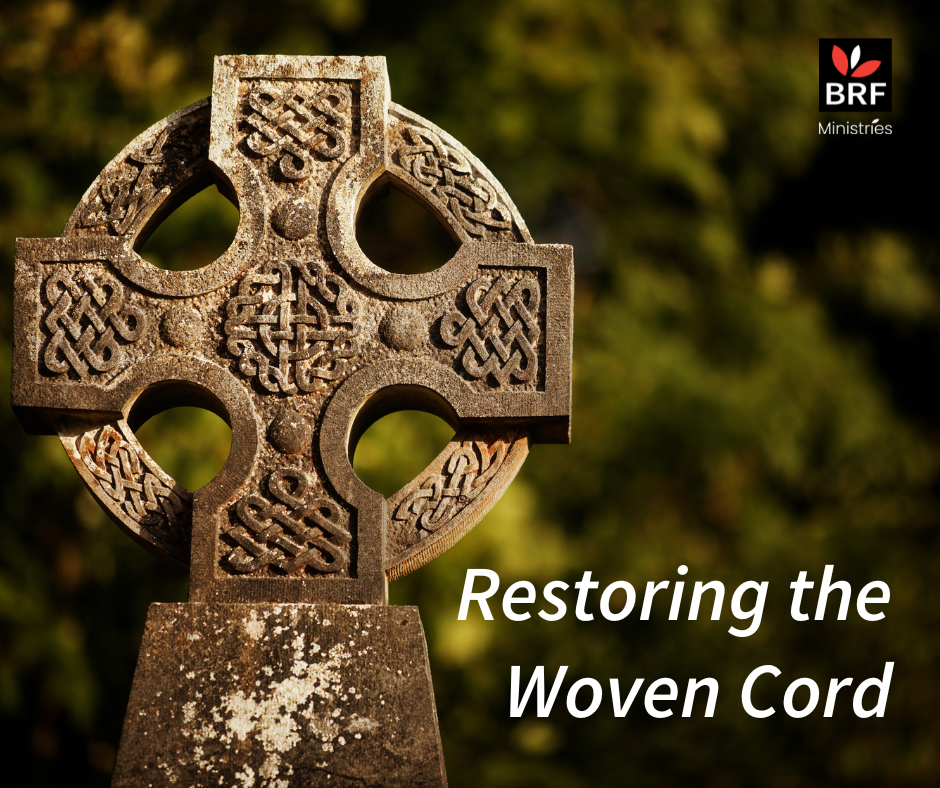Restoring the Woven Cord
Celtic Christianity
Today, while the dominant culture of Christendom collapses, Celtic spirituality commends itself as one that is truly authentic and humble, and respects the life and values of the local people, while at the same time offers the claims of the gospel with clarity and challenge. It was this that excited that group of South Africans, there for the retreat, who, though they live 6,000 miles away from the locus of those stories, nonetheless felt an affinity with the likes of Columba, Brigid, Hilda and Cuthbert. Apart from anything else, this reassured me that Celtic Christian spirituality does not just belong to Ireland and the British Isles, but has relevance to many communities across this globe.
Frequently I witness such a mix bringing healing, renewal and new direction to the pilgrim’s life. We never cease to be amazed by what takes place in these ancient locations of faith, where the stories of the saints seem to be as alive as ever. It has sometimes been pointed out that many of the people who get excited about Celtic Christianity, including authors like myself, are not from Celtic origins. At one level, this could disqualify us from claiming to write with any sense of authority on the subject. But we are those who look with envy to our Celtic friends and recognise that they have in their heritage something we have missed. And one of the great gifts of Celtic spirituality is generosity – the likes of Patrick and Brigid, as they were forming faith around the smoky peat fires of Ireland, were preparing missionaries who would spread out across a post-Roman Europe, not sharing an Irish faith, but a faith that could adapt to and settle in any culture.

What is also undoubtedly true is that the early church in Ireland and Britain was built of ordinary, fallible, mortals who made plenty of mistakes. I have tried my best to include stories in this book that have a historical basis, and generally the saints discussed in these stories come over in a good light. However, I have no doubt that those ordinary mortals also got lots wrong. Clearly, some of them were still misogynist, some were interested in power, they annoyed each other and they had their fights. But the fact that they got some things wrong does not take away from the fact that they got a great deal right, and it is those right things that still shine bright for us today. Critics of Celtic Christianity often accuse writers like me of romanticising the stories. I think this term is usually used to imply that we in some way attempt to enhance or even fabricate the story to idealise it and make it more appealing. I try to be as accurate as I can about the stories, but I can’t deny romance comes into it, and it is the romance of love.

I read Patrick’s confession and feel a strong affection for this man struggling with his poor Latin to convey his love of Jesus and his horror of slavery. I open the pages of Bede and delight to read about the Irish Aidan who displayed such love for the English people among whom he walked. I stand in the location of the fire pit at Kildare and feel great admiration for Brigid who, even allowing for the many legends, still stands as one of the great leading lights of this early church. I long that my heart never hardens to the beauty of these stories of old that inspire me in my witness for Christ today.
We are discovering new things about these ancient days all the time, and we may yet discover that we have got some bits of our history wrong. But within many of us, it seems, there lies a deep longing to discover an expression of faith that looks like the one we think we have discovered in the early Celtic church. It is that longing that we should safeguard, for such longings as these spur us to build the kind of church that is true to the gospel of Jesus. My hope and prayer is that readers of a book such as this will not end up in a place of wistful nostalgia, but will be renewed with a fresh and empowering vision of the kingdom of God.
Michael Mitton
Excerpt from Restoring the Woven Cord

Other Celtic Spirituality titles from BRF Ministries









